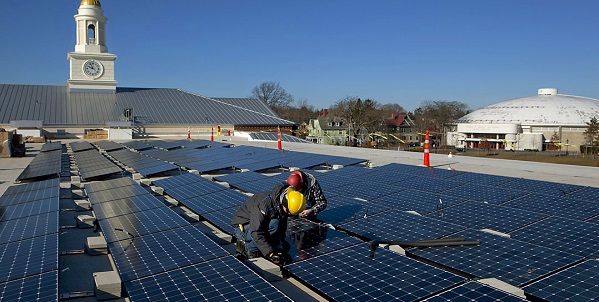SPECIAL REPORT.
According to a report from the research firm Bloomberg New Energy Finance (BNEF), the United States is on track to deploy a record 18GW of new renewable energy capacity this year (2015).
The report also states that about 23 GW of coal-fired power plants will be retired this same year.
Annual records for renewable build, coal retirements and gas burn all expected to be broken in 2015.
— Bloomberg New Energy Finance (BNEF)
The report also adds that an estimated 9.1 GW capacity of solar power will be constructed–an all-time annual high; specifying that the state of California will be responsible for contributing about half of this capacity due to its rather “progressive” climate policies.
With regards to coal fired power plants–as mentioned above, the report indicates that 7% of them will be closed. BNEF attributes this to the continues drop in natural gas prices and new standards set on mercury emissions. Plus the aging infrastructure of these plants doesn’t help the case to keep them running.
“This means that we could witness a scenario in which the United States will start using more of its natural gas plants for power in 2015. This will be a first in the fight against climate change.”
— Derick Ajumni, Editorial Manager at PVBuzz.
BNEF concludes that this scenario will play a major role in the reduction of greenhouse gas emissions such as carbon dioxide (CO2) from the US electricity generating industry to lowest levels since 1994.
“More interesting than the single-year drop in emissions are the ‘structural’ impacts that will live on for decades,” says William Nelson, Head of North American Analysis. “Emissions can rise or fall year-to-year based on weather anomalies and volatile fuel prices – but in 2015, we’ll take a giant, permanent step towards de-carbonizing our entire fleet of power plants.”
— Bloomberg New Energy Finance (BNEF)
2015 will indeed be a good year for the renewables industry, but the question remains whether this trend will continue after 2015. To that, William Nelson says it will–but cautioned that this will only happen at a slower pace.
That we may never again see 23 GW of coal capacity retired in a single year; and renewable build could drop significantly in 2017, when important US federal tax incentives step down or expire.














Comments